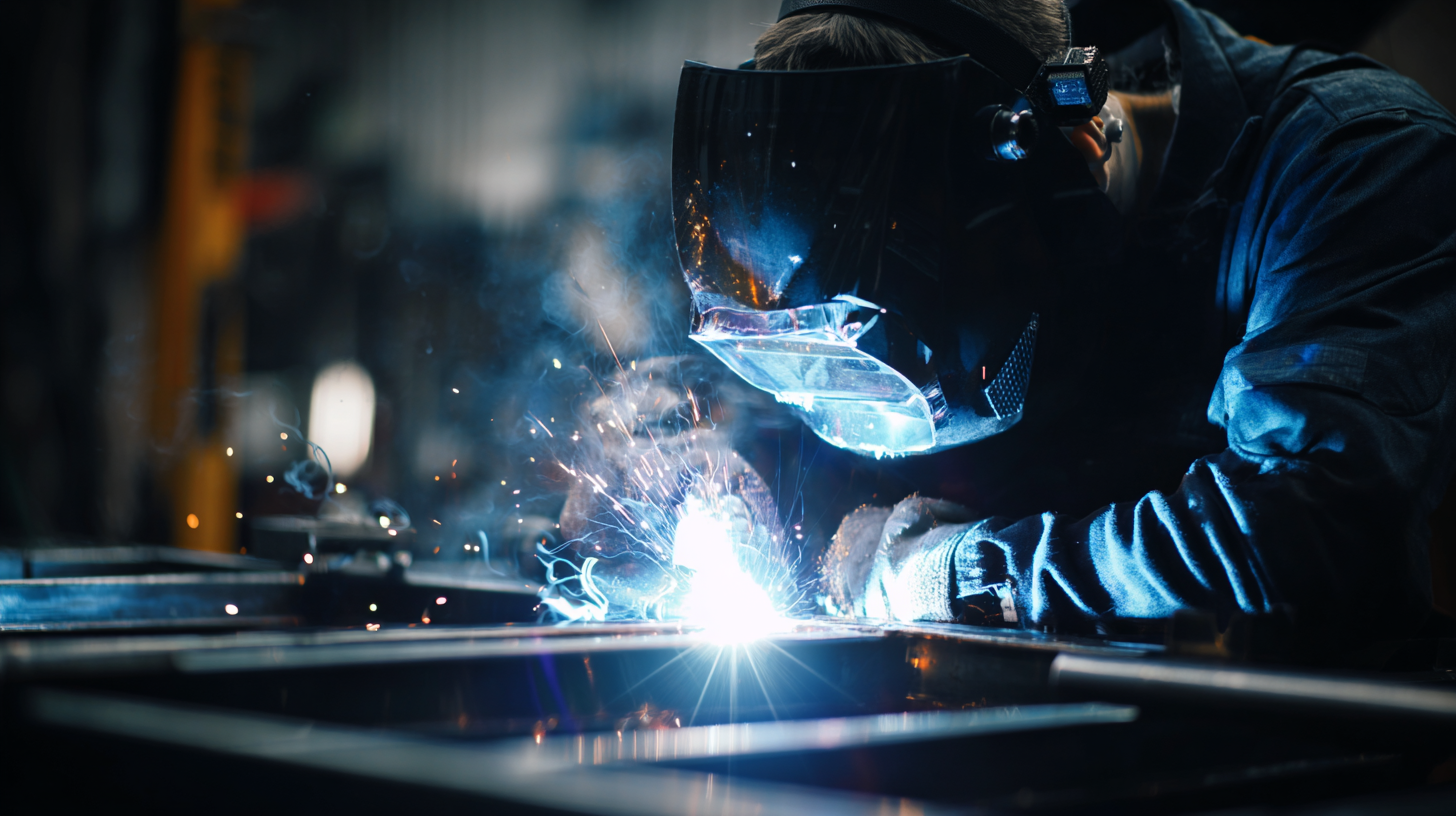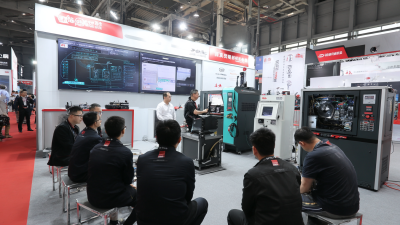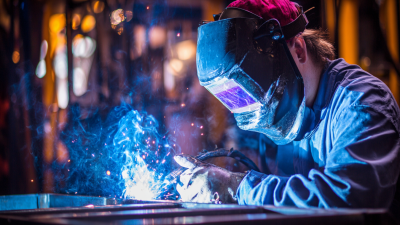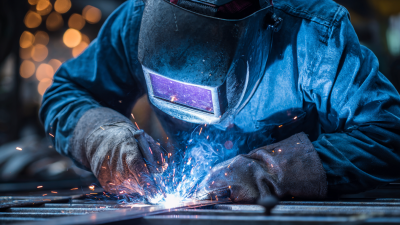In the rapidly evolving landscape of manufacturing and fabrication, the advent of advanced technologies has played a pivotal role in enhancing efficiency and precision. Among these innovations, the "Welding Cut Machine" stands out as a transformative tool, significantly affecting the metalworking industry. According to a report by Grand View Research, the global welding equipment market is expected to reach USD 20.1 billion by 2025, highlighting the increasing demand for sophisticated welding solutions that meet modern production needs. This evolution is driven not only by the need for faster turnaround times but also by the growing emphasis on high-quality outputs, as manufacturers strive to maintain competitive advantages.

The evolution of welding cut machines has been a significant driving force in the metalworking industry. Originally, traditional cutting methods relied heavily on physical labor and limited technology, resulting in slower production times and less precision. However, with the advent of advanced welding cut machines, businesses have experienced remarkable improvements in both speed and accuracy. Modern machines are equipped with sophisticated software and laser technologies that allow for intricate designs and exact measurements, effectively reducing waste and enhancing overall efficiency.
Tips for getting the most out of your welding cut machine include ensuring regular maintenance checks to prevent wear and tear, which can compromise performance and precision. Additionally, investing in quality materials can greatly enhance the cutting process, as high-grade metals provide cleaner cuts and require less rework. Finally, staying updated on the latest software advancements can help operators utilize their machines to their full potential, adapting to new techniques and improving productivity.
As these machines continue to evolve, they are becoming integral to modern fabrication processes. The integration of automation and robotics into welding cut machines is reshaping how metalworking companies approach production. This technological shift not only streamlines operations but also opens up new avenues for innovation, ultimately pushing the boundaries of what's possible in fabrication.
| Machine Type | Cutting Speed (mm/min) | Material Thickness (mm) | Precision (mm) | Energy Consumption (kW) |
|---|---|---|---|---|
| Plasma Cutting Machine | 2000 | 1-30 | 0.5 | 30 |
| Laser Cutting Machine | 5000 | 0.5-20 | 0.1 | 20 |
| Water Jet Cutting Machine | 1500 | 1-200 | 0.3 | 25 |
| Oxy-Fuel Cutting Machine | 1000 | 5-300 | 1.0 | 15 |
Modern welding technologies are transforming the metalworking industry, significantly enhancing efficiency and precision in fabrication processes. According to recent industry statistics, laser welding machines can improve production speeds by up to 50% compared to traditional methods. This increased speed not only allows for greater output but also reduces labor costs and minimizes downtime, making operations more competitive in today’s fast-paced market.
In addition to speed, advanced welding cut machines offer remarkable precision, with tolerances often reaching within microns. This level of accuracy is essential for industries that require tight specifications, such as aerospace and automotive manufacturing. Moreover, experts estimate that the adoption of precision welding technologies has led to a 30% reduction in material waste, contributing to more sustainable practices within the sector. As these technologies continue to evolve, their impact on operational efficiency and resource optimization is expected to grow even further, driving innovation in metalworking.
 The evolution of metalworking has seen a significant shift from traditional welding techniques to the implementation of advanced cut machines, which are increasingly recognized for their efficiency and precision. According to a report by Grand View Research, the global industrial welding market is projected to reach $31.49 billion by 2025, fueled by the rising demand for high-quality fabrication processes. Traditional welding methods, while effective, often involve longer setup times and require skilled labor to execute intricate designs. The American Welding Society estimates that companies can save up to 20% in labor costs when transitioning to automated cutting technologies.
The evolution of metalworking has seen a significant shift from traditional welding techniques to the implementation of advanced cut machines, which are increasingly recognized for their efficiency and precision. According to a report by Grand View Research, the global industrial welding market is projected to reach $31.49 billion by 2025, fueled by the rising demand for high-quality fabrication processes. Traditional welding methods, while effective, often involve longer setup times and require skilled labor to execute intricate designs. The American Welding Society estimates that companies can save up to 20% in labor costs when transitioning to automated cutting technologies.
In contrast, state-of-the-art cut machines utilize advanced technology such as laser and plasma cutting, which allows for faster throughput and a reduction in material wastage. A study published by the Fabricators & Manufacturers Association highlighted that manufacturers deploying CNC cutting machines report an 85% increase in cutting precision compared to conventional welding practices. This precision not only leads to enhanced product quality but also minimizes rework and associated costs, paving the way for more sustainable manufacturing solutions. The integration of these cutting-edge machines thus marks a revolutionary step towards greater productivity in modern fabrication environments.
Welding cut machines have become indispensable tools in the realm of precision fabrication. Their ability to seamlessly cut, weld, and shape metal components has transformed various industries, from automotive to aerospace. These machines utilize advanced technologies such as laser cutting and plasma cutting, ensuring that every component is crafted with unparalleled precision. In real-world applications, manufacturers leverage welding cut machines to create intricate designs and complex geometries that were once deemed impossible, significantly enhancing both the quality and efficiency of production.
**Tips:** When selecting a welding cut machine for your operations, consider the material types and thicknesses you'll be working with. Different machines excel in specific applications—laser cutters for thin materials, while plasma cutters are better suited for thicker sections. Additionally, regular maintenance is critical to ensure consistent performance and longevity of equipment.
In the automotive industry, for instance, the precision of welding cut machines allows for the fabrication of intricate parts that contribute to vehicle performance and safety. Manufacturers reporting less waste and fewer errors attribute their success to these advanced machines, which also streamline production processes. As businesses continue to embrace these technologies, the future of metalworking looks promising, poised for growth and innovation.
**Tips:** Ensure proper training for your operators to maximize the capabilities of welding cut machines. Their expertise can significantly impact production efficiency, reducing downtime and enhancing overall quality. Moreover, staying updated with the latest technological advancements can provide a competitive edge in the market.

The welding industry is on the brink of transformation, driven by innovative technologies that significantly enhance efficiency and precision in metalworking. Recent advancements, such as integrated die-casting techniques in automotive manufacturing, have shown a fundamental shift from traditional welding processes. For instance, the implementation of a single-casting approach in vehicle assembly can reduce assembly steps by up to 79%. This not only streamlines production but also minimizes the likelihood of errors associated with multiple welding operations.
As laser technology continues to advance, it plays a crucial role in this revolution. The global industrial laser systems market is projected to reach $30 billion, indicating robust growth and increasing penetration across various applications. The versatility of laser welding systems enables their usage in complex and demanding environments, enhancing precision and reducing the time taken for metal fabrication.
Furthermore, the welding metal corrugated pipe market is expected to grow from $412.9 million in 2025 to $668.1 million by 2033, reflecting a compound annual growth rate of 6.2%. These indicators highlight how innovations in welding technology are reshaping the landscape of metalworking, paving the way for increased efficiency and better-quality outputs in modern fabrication environments.






